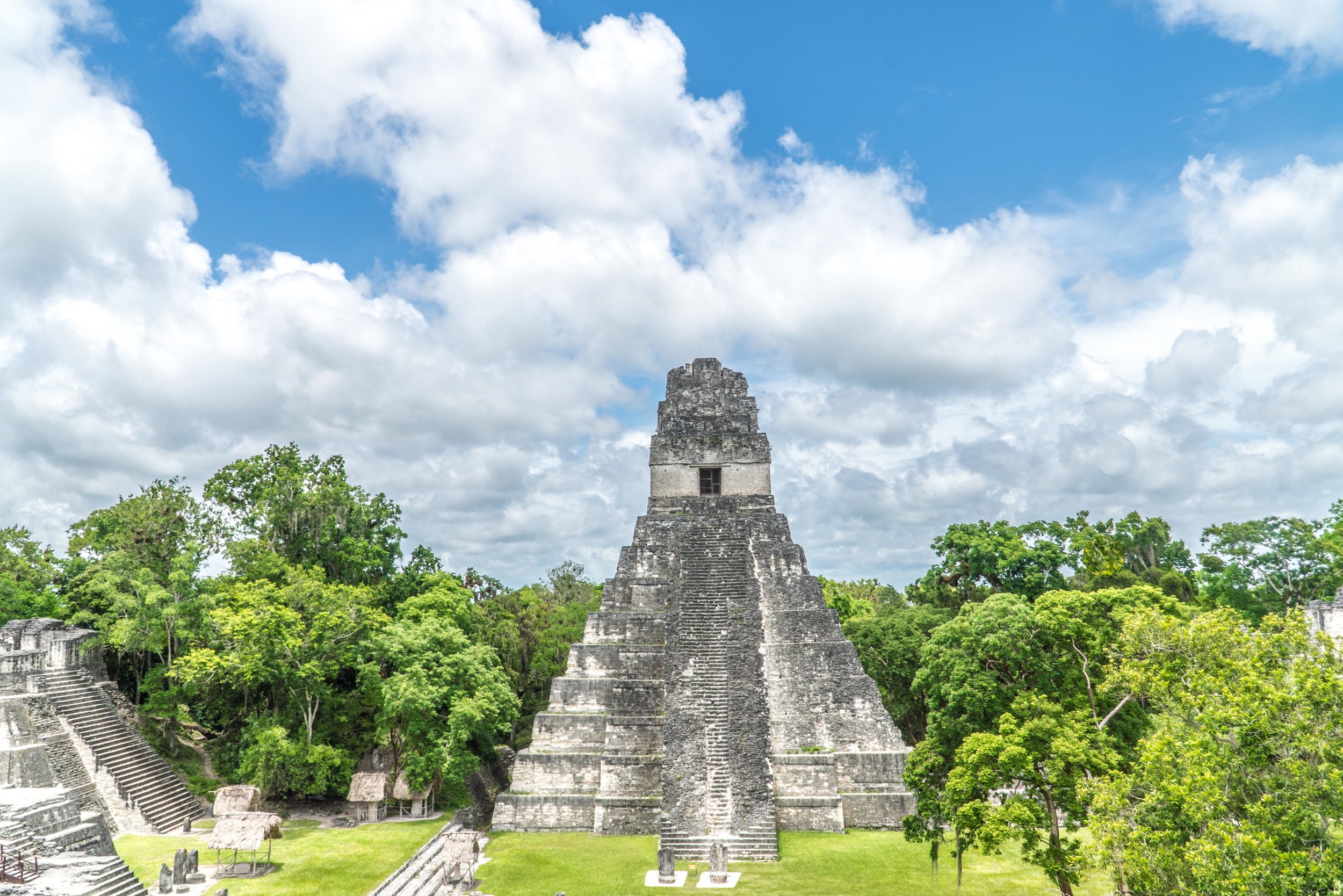A History of Prohibition With 7 Prohibition-Era Cocktail Recipes
'Tis the season ladies and gentleman. That's right, it's time to dust off the cocktail shakers, pop the champagne, and let that bottle of wine breathe. No, I'm not talking about celebrating Christmas, or for that matter, any of the other holidays. Rather, I'm talking about the December 5th holiday of Repeal Day, a.k.a. celebration of the end of Prohibition.
For many people and places, bellying up to the bar for a cold beer, glass of wine, or martini is about as everyday as going to work. However, there was a time not too long ago when such an activity was a serious and punishable offense. It wasn't that you couldn't drink, but simply that the manufacture and sell of booze was prohibited. But having occurred in the early 1900s from 1920-1933 (and overlapping with the Great Depression), people hadn't exactly stockpiled booze when it had been so readily available.
But many of the reasons for enacting prohibition actually backfired. Yes, drinking did largely decrease, at least at the beginning, but many of the problems that Prohibition was supposed to solve, it consequently exacerbated. Organized and violent crime, for example, increased, since organized crime became the vehicle for distribution of illegal booze. Furthermore, the federal inmate population increased by several hundred percent. And Jobs that had up until that point had been legal, were now illegal, putting thousands of Americans out of work. According to the Brewers Association, breweries alone in the early 1900s before Prohibition numbered twice as many as they do today. TWICE! It's no wonder that the Great Depression hit during this same time period.
But on December 5, 1933, the curtain came down on Prohibition. And boy did people celebrate! Headlines around the world exclaimed the end of prohibition, with bars pouring into the streets with people bellying up for a drink for mere coins. And perhaps the most iconic image, the introduction of Budweiser's Clydesdale horses, strolling down Pennsylvania Avenue, delivering beer to the White House.
82 years later and Repeal Day has given us much more, not the least of which is the Budweiser Clydesdales. Also, it gave us speakeasies, or rather legal speakeasies. But perhaps first and foremost, what's resulted since then, and especially the last decade, good drinks, many of which survived and have evolved since Prohibition.
So today, I come to you with some of my favorite pre-Prohibition and Prohibition-era cocktail recipes that survived prohibition, most of which were created prior to the enactment of prohibition. But perhaps the biggest perk of Repeal Day: Cocktails that would make the dollar menu! That's right, bars around America on Repeal Day, this Saturday, December 5, will be serving the cheapest, most delicious cocktails you've ever had, many of which are just for one or two dollars, while others will even be less than that. While bars in many cities around America will be celebrating Repeal Day with specials, no city seems to be doing so as much as Los Angeles. You'll find dollar and two-dollar drink specials for bars around L.A. at the bottom.
Prohibition-Era Cocktail Recipes
Sidecar
- 1.5 oz. cognac
- .75 oz. Cointreau
- .75 oz. lemon juice
It doesn't get much easier, and delicious, among Prohibition-era cocktails than the Sidecar. The Sidecar is potentially the cocktail that's been most associated with Prohibition. And what I love about it, and many of the cocktails of this era that have been handed down, is that it's simple, easy-to-make, and delicious. No hard to find liqueurs or herbs, steeping fruit, or laundry list of ingredients. I think the Sidecar is a great example of bartenders simply making the most of what they had available. The traditional recipe simply calls for cognac, Cointreau, and lemon juice shaken in a cocktail shaker with ice and then strained into a chilled glass that has been rimmed with lemon juice and sugar. Of course like many classic cocktails, there are tons of variations, such as this one to the right from the Iron Horse Hotel ($9 on Saturday alongside $0.05 drafts and $5 growlers), which substitutes champagne for the cognac and uses a little simple syrup.
Sazerac
- 1 cube sugar
- 2 oz. rye whiskey
- Splash of Herbsaint (Absinthe)
- 3 dashes Peychaud's Bitters
- Lemon peel zest
The Sazerac has long been one of my favorite cocktails, and it could arguably be called the American cocktail, since it predates just about every cocktail from America. It made its way through the Civil War, endured Prohibition, outlasted both of the world wars and is now one of the most popular booze-forward drinks. Yet there's a little bit of an art to making this pre-prohibition cocktail. Pack a rocks glass with ice. In a second mixing glass place a sugar cube and wet it down with Peychaud's bitters before crushing the sugar and adding rye. Stir to melt down and chill mixture for minimum of 50-75 stirs or 2 minutes. Empty the ice from the first glass and coat it with absinthe, discarding any remaining absinthe. Strain the second glass into the first and zest with lemon then rub rim, and garnish with a lemon peel. (Photo from Iron Horse Hotel.)
Ward Eight
- 2 oz. rye whiskey
- .75 oz. lemon juice
- .75 oz. orange juice
- 1 tsp. grenadine
The Ward Eight is Boston's contribution to cocktail history, dating back to the late 1800s. This was a popular Prohibition cocktail in part because of how it masked the alcohol. It's no drink you're going to write home about, since it's essentially just a variation of a whiskey sour, yet when properly made is a refreshing cocktail that can be dangerous. Shake all ingredients with ice in a cocktail shaker with ice and strain into a chilled cocktail glass. Renowned cocktail historian David Wondrich suggests that it also makes a nice summer cooler, in which you'd add to a glass with ice and top with a little club soda.
South Side
- 2 oz. gin
- 1 oz. lime juice
- .5 oz. simple syrup
- Several mint leaves
Like many classic cocktail recipes, the South Side's history is a little murky, although the story goes that this was a popular drink among mobsters on the south side of Chicago during Prohibition. Simply add all of the ingredients to a cocktail shaker with ice and shake. Strain into a chilled cocktail glass and garnish with additional mint leaves. (Photo from Krista on Flickr.)
Bee's Knees
- 2 oz. gin
- .75 oz. lemon juice
- .75 oz. honey simple syrup (equal parts honey/water)
The term "bee's knees" is undoubtedly associated with the 1920s, used to express excellence. However, the history of this drink is a little fuzzier. Yet it's believed that the addition of honey helped mask the small of alcohol, which was often the case with drinks served during prohibition, lest a speakeasy get busted by authorities. Some recipes call for honey, but I recommend making a honey simple syrup (equal parts honey and water) so that the honey properly combines. You'll add all of the ingredients to a cocktail shaker with ice and shake. Strain into a chilled cocktail glass. (Photo by Tim Vidra on Flickr)
Mary Pickford
- 2 oz. white rum
- 1 oz. pineapple juice
- 1 barspoon of maraschino liqueur
- 1 barspoon of grenadine
For movie buffs, Mary Pickford is a familiar name since she was a Canadian-American actress who was co-founder of the United Artists film studio and one of the original founders of the Academy of Motion Picture Arts and Sciences, or what most people know for the annual Academy Awards. It's largely claimed to have been created during Prohibition by either Fred Kaufman at the Hotel Nacional de Cuba or Eddie Woelke, who fled to Cuba during Prohibition and is known for creating a number of classic Cuban cocktails, such as the El Presidente. To make the Mary Pickford cocktail, add all the ingredients to a cocktail shaker with ice and shake. Strain into a chilled glass and garnish with a cherry (or two).
Corpse Reviver No. 2
- 1 oz. gin
- 1 oz. Cointreau
- 1 oz. Lillet Blanc
- 1 oz. lemon juice
- 1 dash absinthe
Quite possibly the best name for a cocktail in history, and perhaps the original hair of the dog, the Corpse Reviver. Published in 1930 in Harry Craddock's "Savoy Cocktail Handbook," he wrote, "Four of these taken in swift succession will un-revive the corpse again." It packs a punch, obviously, since all except one ingredient is booze. One of a series of corpse reviver cocktails, simply add all of the ingredients to a cocktail shaker with ice and shake. Strain into a chilled glass and garnish with an orange or lemon peel.
Los Angeles Repeal Day Dollar Cocktails
- Playa Provisions and Hudson House: $2 Old Fashioned cocktails from 5pm-7pm.
- 1933 Group (Harlowe, Sassafras, Bigfoot West, Bigfoot Lodge, Thirsty Crow, and Oldfield's): $1 Old Fashioned cocktails from 5pm-7pm.
- Townhouse: Prohibition-priced cocktails for an hour once the bell is rung (sometime between 5 pm onward).
- La Cuevita: $1 tequila presses from 5pm-7pm.
- Beelman's Pub: Buy-one-get-one-for-$1 Old Fashioned.
What are your favorite Prohibition-era cocktail recipes?



















